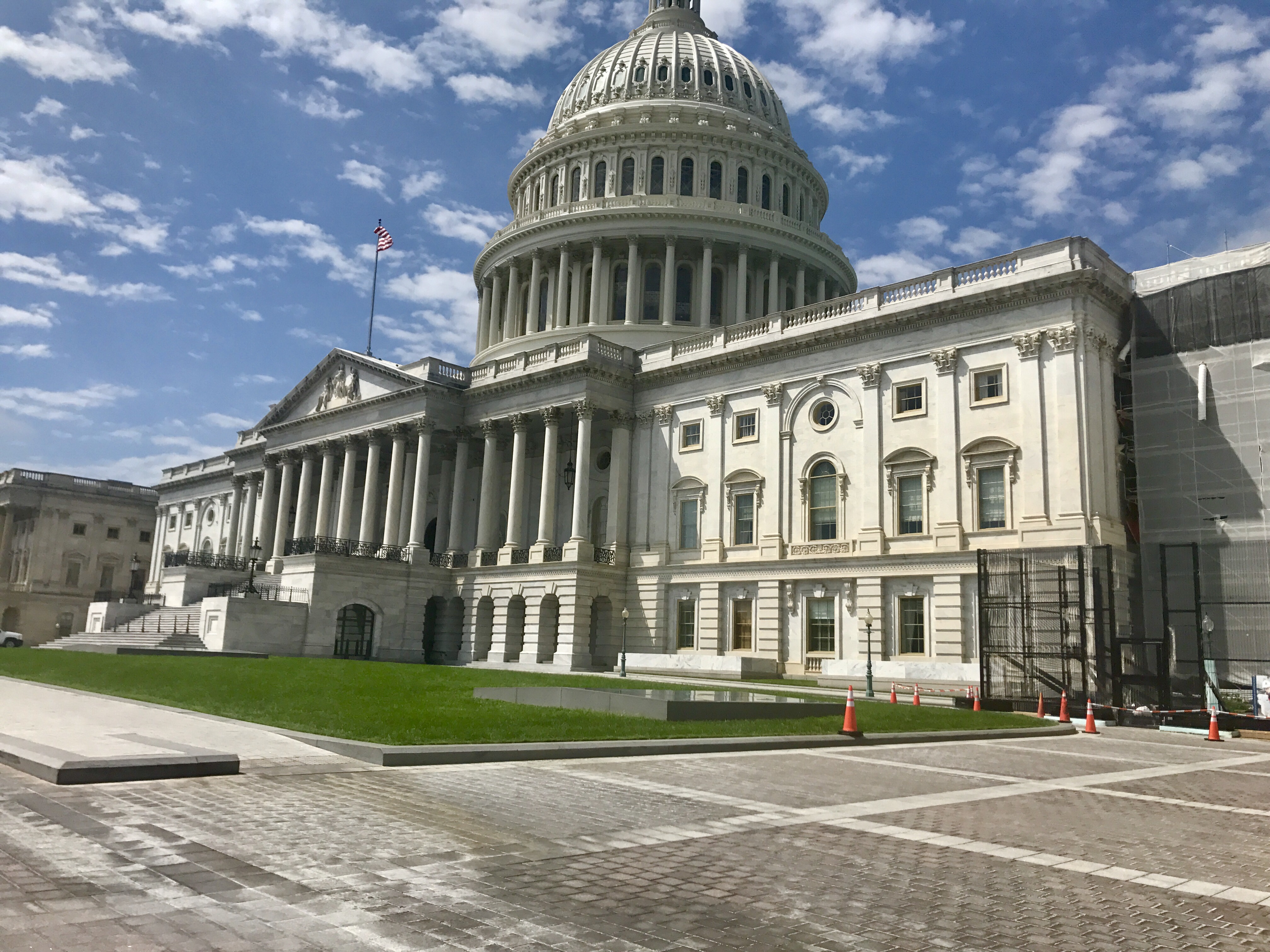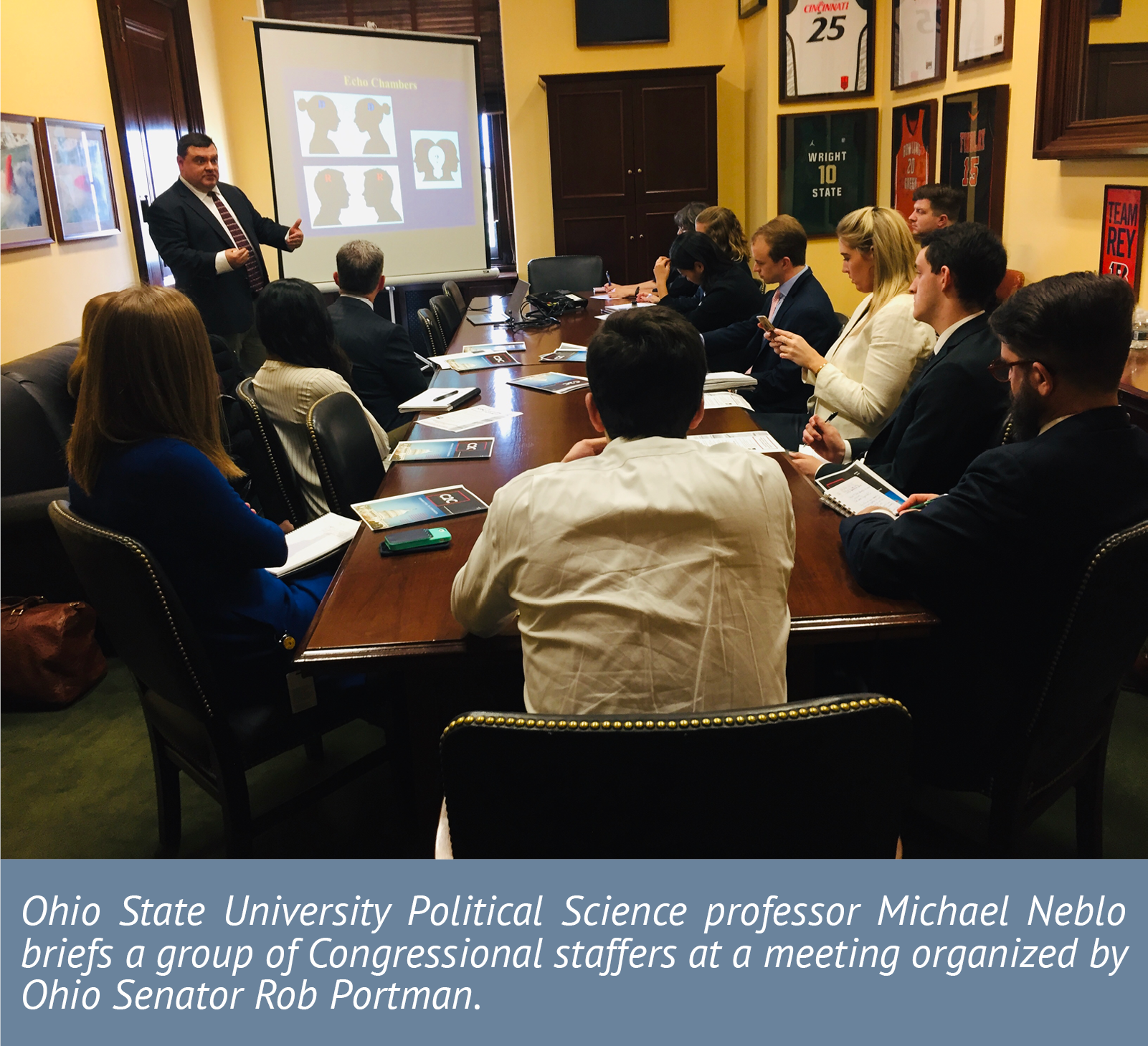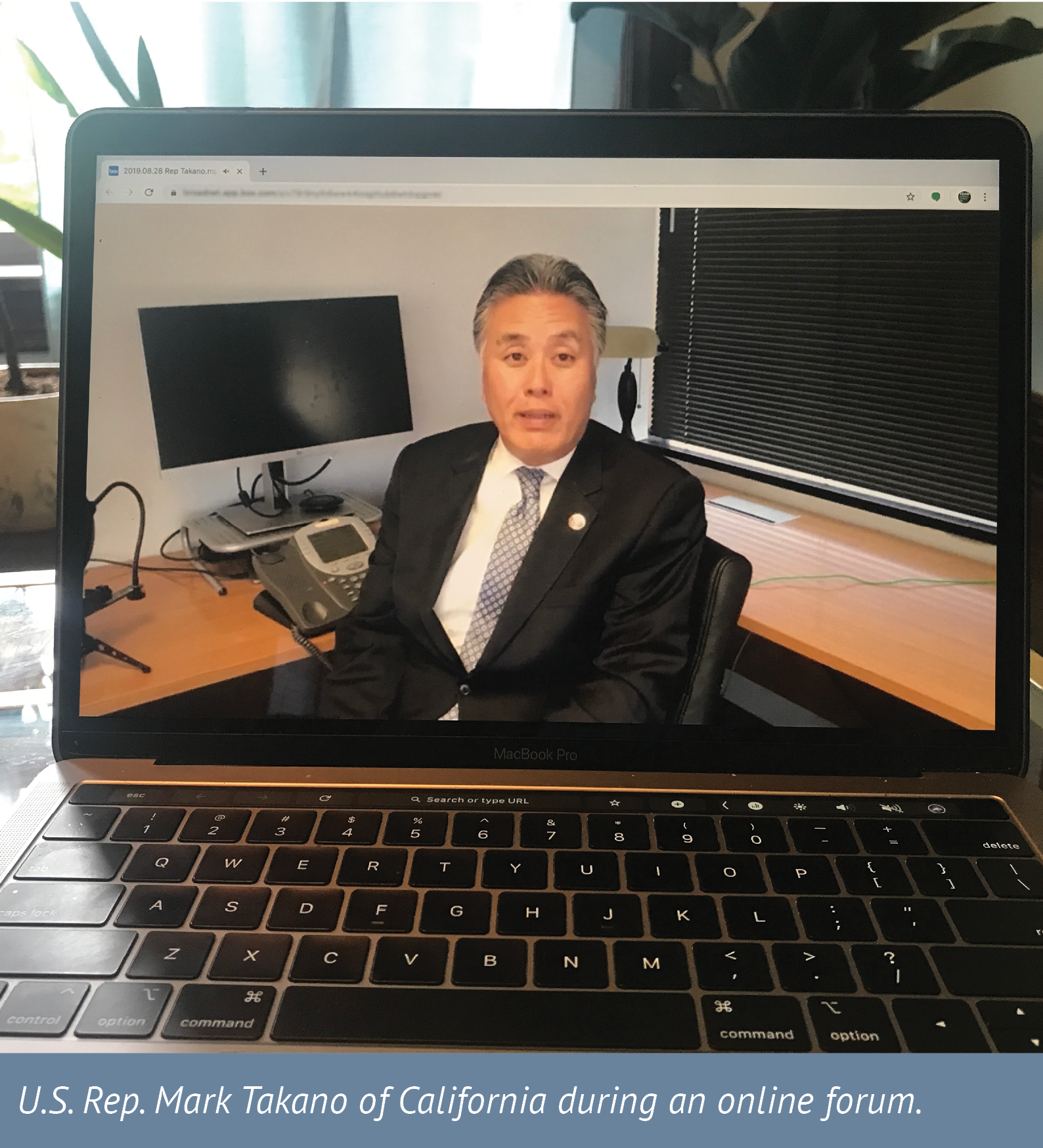By Amy Lee
Any city or county staffer who’s ever led one of the traditional “three minutes at the mic” community input session knows what I’m about to say: the chance of these events producing meaningful new input into policymaking is close to a big round zero. You’re likely to get the same 40 people who show up for all community input sessions, almost regardless of topic. You’ve already heard what they’re going to say.
Doing some groundwork might get a few community organizations to send representatives, or even a few newcomers who are genuinely interested in engaging on this issue. But whatever they have to say, you have no way of knowing if it’s representative of many other folks like them, so it’s hard to know how to really use their info. For that, well, it’s back to the community-wide survey, which isn’t really representative either.
We all know this is a problem at the city and on up to the state level. But it’s not just a failure of community engagement, although that’s bad enough— it results in both elected and appointed staff having highly skewed information upon which to make decisions, and thus policies that aren’t what people want, which leads to citizens feeling that lawmakers don’t care. This feeling leads even more folks to not show up at community input meetings, not turn to the city for resources as they’re planning their own initiatives, and not take the surveys.

But on the bright side, there is another group of leaders who has it even worse than you—members of the United States Congress. But believe it or not, it is actually members of Congress who participated in a novel constituent engagement experiment, and the results of that experiment should hearten anyone who deals with the public, at whatever level.
A groundbreaking constituent deliberation field experiment
In 2006, a bipartisan group of thirteen sitting members of Congress, twelve representatives and one senator – frustrated and dissatisfied with status quo politics and limited opportunities for constituent engagement – agreed to participate in the first randomized control trial ever conducted with sitting members of Congress. Our research team conducted more than twenty “deliberative online townhalls” for the group on the challenging topics of immigration and terrorist detainee policy.
We recruited a representative sample of constituents from each district or state, and then randomly assigned some constituents to receive an invitation to participate in a “deliberative online townhall” and some just to take surveys. Under this design, we were able to compare the responses of constituents who participated in the town hall with those who did not in a scientifically rigorous way. Our team developed a way of combining the then-emerging tele-townhall technology with the following deliberative principles:
- Representativeness—recruiting a scientifically random, truly representative sample of the constituents to participate, not just “the loudest voices in the room.”
- Focus— limiting conversation to a single issue, and providing constituents factual, non-partisan background information on the issue in advance.
- Independence—having these events organized by a neutral, non-partisan third party, not the member’s staff, and moderated to promote transparency and fairness.
- Authenticity—the setup encouraged participating members to be candid and responsive to questions, rather than giving a speech or presenting an infomercial.
The townhalls took place online, with participants submitting questions by typing them in, and the representative or senator responding verbally to the group at large, for about 90 minutes. The moderators facilitated the exchange with a very light hand, essentially simply relaying questions to the member of Congress in the order in which they came, although they did remove questions that had already been asked/answered and questions that were off-topic. Interestingly, with more than 1,400 questions and comments submitted across all the sessions, the number of comments that had to be discarded because of vulgarity or abusive language was exactly zero. Part of this lack of incivility, we believe, was due to the fact that the online venue removed some of the incentive to grandstand one often sees at in-person events, but the design features that were most impactful were the recruiting and the convening. Participants were recruited, not by simply posting the opportunity in local media, which would have attracted the same, highly motivated partisans who generally attend these, but by extending invitations only to a random, representative sample of the distict. This method drastically reduced the ratio of hard-core partisans in the event itself, as well as providing a much broader and more representative sample of constituent opinion. And by convening these townhalls as an independent, neutral third party, constituents felt they had a much better chance of an authentic, meaningful exchange than they would have in an event organized by an interest group or the member’s staff.
The results were striking:
These online deliberative sessions attracted every kind of citizen—the citizens who voluntarily participated in these deliberative were more representative of the country than the electorate. The events offered lawmakers a chance to reach beyond “the usual suspects”—in fact, they particularly attracted citizens who tend not to follow politics or who have become disenchanted with the system. After participating, these citizens became more likely to vote and take part in political discussions.
The design of the deliberative events—with participants reviewing non-partisan back materials and engaging in deliberation guided by impartial facilitators—resulted in high-quality, informed conversations, not talking points and simplistic arguments. About 95 percent of participants said these kinds of events were “important for democracy,” and 97 percent said they would participate in another. Participants surveyed four months after the deliberative event were 10 percent more likely to vote, and another 10 more likely to vote for the representative that engaged with them in this way.
In short, we found that constituents are not so much angry or apathetic, but rather frustrated, but that when they were offered an authentic opportunity to engage in politics in a meaningful way, they were happy to do so, and moreover, tangibly rewarded their lawmakers for providing the opportunity. The events struck the right balance between being intensive enough to make an impact on people’s attitudes and opinions but light enough to be accessible even to constituents with limited time or other resources.
When we looked at the accumulated findings, we realized our team had discovered proof of concept that deliberative engagement connects constituents and lawmakers in authentic, productive, and mutually rewarding ways. We reviewed our findings with other political science scholars, civil society groups, and members of Congress— they agreed.

But if the experiments worked so well, why isn’t every member of Congress doing them now? Quite simply: capacity. Congressional staffing levels have been continuously cut since the 1990s, while the amount of communication staff are expected to handle has increased more than tenfold since the advent of email and social media. Furthermore, recruiting a truly representative sample of the district is time-consuming and often expensive.
To put in this kind of effort amidst the maelstrom of legislative activity, constituent service, regular communications and messaging plus daily fires to put out—if it was one more thing to be added onto their plate, it just wasn’t going to happen. So we asked, but if there were a way for an independent, non-partisan group to get you this kind of high-quality engagement and information, would you use it? “Yes,” they said.
Filling the capacity gap
So that in turn has become the focus of our new research initiative, Connecting to Congress: developing a working model for convening diverse, representative samples of constituents to participate in high-quality deliberative engagement, reporting on the changes in attitudes towards both the member and the issue itself, and then tracking the effect this experience and the information from it has on policymaking and other representational activity.
With support from the Democracy Fund and help from our partner, the National Issues Forums Institute (NIFI), we’re experimenting to update our participant recruitment strategies and our technology, investigating what information and other opportunities Congressional offices really want from these kinds of events, and building support for lawmakers to be able to collaborate with non-partisan civic groups at least as easily as they can with advocacy organizations or other stakeholders.
 So far, our initiative has several congressional offices confirmed to participate in one or more deliberative events this year, including deliberative online townhalls, online forums using the Common Ground for Action platform developed by NIFI and the Kettering Foundation, and deliberative social media events. Our first deliberative townhall for Representative Mark Takano (CA-41) had over 150 constituents participate for the entire hour-long event, and we have upcoming events with both Republican and Democratic House and Senate offices.
So far, our initiative has several congressional offices confirmed to participate in one or more deliberative events this year, including deliberative online townhalls, online forums using the Common Ground for Action platform developed by NIFI and the Kettering Foundation, and deliberative social media events. Our first deliberative townhall for Representative Mark Takano (CA-41) had over 150 constituents participate for the entire hour-long event, and we have upcoming events with both Republican and Democratic House and Senate offices.
After this new round of events, our goal will be to delve into our data and see what we have learned, in order to be able to develop a practical, sustainable plan for making this kind of engagement available to any member of Congress who wants it, and to share our learning and our model with the field of civic practitioners across the country.
Candidly, we know this initiative is a moonshot—competing for bandwidth amid the sheer volume of organized interests, partisanship and other forces at the national level. Our team does believe there is demand for this kind of engagement and information, although the impact on members is still to be seen. But our thinking is, if we can help shift an institution as large as Congress even an inch, the policies that result could open up so much space at other levels of government, which is where we want to go next— to local governments across the country.
Up next: Going Local
As readers of this publication know from personal experience, the reality is that local government is where the real innovation and action on a whole host of important issues happens, and both are increasing even more as gridlock at the national level intensifies. And it makes intuitive sense: local government officials and staff live every day in the communities they serve, surrounded closely by the constituents they are or aren’t able to help, and have much more incentive for direct action and problem-solving than their counterparts in D.C. The opportunities for impact may even be greater for deliberative constituent engagement at the local and regional level than at the federal.
Affordable housing, improving public education, community resiliency planning, as well as many other issues, demand that local policymakers understand how all community members—not just the ones who always show up to public meetings—are affected, how they prioritize it, and what tradeoffs they are, or aren’t, willing to accept in addressing it. We can add what we’ve learned from the Connecting to Congress initiative to the wealth of examples of excellent in-person deliberative engagement in local communities, as well as a few standout examples of online deliberations on local issues, like the Every Voice Engaged deliberations using the Common Ground for Action platform on a school redistricting issue. Most importantly, though, we can help local governments identify and even develop independent, non-partisan resources in their own communities that can provide them the capacity for this kind of engagement.
We’ve begun conversations with the National Conference of State Legislators, and look forward to reaching out to the U.S. Conference of Mayors and other local government organizations over the next few months, hoping to share what we have learned so far about deliberative constituent engagement and hearing more about the specific needs of different local government organizational structures and places. We can’t wait to get started, and would love to have collaborations ready to launch mid-2020. We would particularly love to work in communities where we have already begun to build relationships with the member of Congress, to see what could happen if this approach was adopted for dealing with a problem from the grassroots all the way up. If this sounds like something you’re interested in, please feel free to get in touch!
Amy Lee is the Associate Director of the Institute for Democratic Engagement and Accountability at Ohio State University. Before joining the institute, she served as a program officer at the Charles F. Kettering Foundation for eight years.



